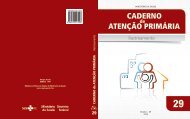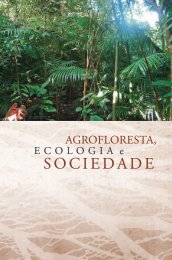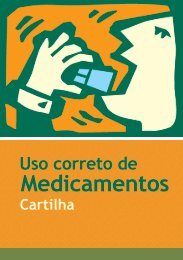Evolution of Oviductal Gestation in Amphibians
Evolution of Oviductal Gestation in Amphibians
Evolution of Oviductal Gestation in Amphibians
You also want an ePaper? Increase the reach of your titles
YUMPU automatically turns print PDFs into web optimized ePapers that Google loves.
Fig. 2. Eleutherodactylus jasperi pregnant maternal oviduct<br />
l<strong>in</strong><strong>in</strong>g. Top: Anterior part <strong>of</strong> duct with thick wall and high epi-<br />
thelial cells. Bottom: Dilated posterior portion <strong>of</strong> the oviduct<br />
that houses the embryos. Note that the oviductal epithelium is<br />
stretched and th<strong>in</strong>, but not secretory <strong>in</strong> the region <strong>of</strong> the em-<br />
bryos; its cells are lower and lack cilia and microvilli (from Wake,<br />
’78a). Bar = 0.1 mm. c = capillary; ct = connective tissue; e<br />
= epithelium; do = dilated posterior oviduct; uo = upper thick<br />
oviduct.<br />
convoluted part <strong>of</strong> the duct, and then to the mono-<br />
layer <strong>of</strong> cuboidal cells <strong>of</strong> the “uterus.” Capillaries<br />
lie just below the epithelial monolayer <strong>of</strong> the<br />
“uterus,” so there is the potential for gaseous ex-<br />
change with the develop<strong>in</strong>g embryos.<br />
The development <strong>of</strong> the tadpoles is similar to that<br />
<strong>of</strong> other Eleutherodactylus reported <strong>in</strong> the litera-<br />
ture. Wake (‘78a) noted that E.jasperi tadpoles have<br />
an egg tooth (Fig. 3) similar to that <strong>of</strong> direct-<br />
develop<strong>in</strong>g Eleutherodactylus. The egg tooth is used<br />
to penetrate the tough egg membrane <strong>in</strong> many spe-<br />
cies <strong>of</strong> Eleutherodactylus <strong>in</strong> order for the direct-<br />
AMPHIBIAN VIVIPARITY 397<br />
Fig. 3. Egg tooth (arrow) <strong>of</strong> oviductal embryo <strong>of</strong> Eleuthero-<br />
dactylus jasperi (after Wake, ’78a). Bar = 40 pm.<br />
develop<strong>in</strong>g froglets to “hatch”, and may be so used<br />
<strong>in</strong>traoviductally by E. jasperi, though the tooth is<br />
small, not heavily kerat<strong>in</strong>ized, and lacks an outer<br />
layer. The tail is th<strong>in</strong>, broad, and highly vascularized.<br />
In most <strong>of</strong> the <strong>in</strong>traoviductal tadpoles or froglets<br />
exam<strong>in</strong>ed, the tail was appressed to the oviductal<br />
epithelium and the dorsum <strong>of</strong> the young. Further,<br />
the tail is reta<strong>in</strong>ed throughout virtually all <strong>of</strong> the<br />
oviductal developmental period, with metamorphosis<br />
be<strong>in</strong>g abrupt and very near the time <strong>of</strong> birth. It<br />
is plausible that the tail might function for gaseous<br />
exchange between tadpole/froglet and the adult. The<br />
tail has been suggested to be a respiratory structure<br />
<strong>in</strong> direct developers as well (Lynn, ’42).<br />
Ovoviviparity is suggested for E. jasperi because<br />
the abdom<strong>in</strong>al cavity <strong>of</strong> newborns is dom<strong>in</strong>ated by<br />
unresorbed yolk. This is characteristic <strong>of</strong> some <strong>of</strong><br />
the direct develop<strong>in</strong>g species as well. With a large<br />
volume <strong>of</strong> yolk available, and with no apparent oviductal<br />
or embryonic modifications for other k<strong>in</strong>ds<br />
<strong>of</strong> maternal nutrition, it is unlikely that nutrition<br />
other than the yolk is provided (Wake, ’78a). Wake<br />
(’78a) has discussed the scenarios for the evolution<br />
<strong>of</strong> ovoviviparity from direct development <strong>in</strong> the genus<br />
Eleutherodacylus.<br />
The African bufonid genus Nectophrynoides <strong>in</strong>cludes<br />
species that reflect the evolution <strong>of</strong> live-bear<strong>in</strong>g<br />
reproductive modes <strong>in</strong> frogs. Nectophrynoides<br />
osgoodi is a “typical” bufonid, with external fertilization<br />
and aquatic tadpoles and N. malcolmi (Fig.<br />
4) is a direct developer (Grandison, ’78; Wake, ’80a);






